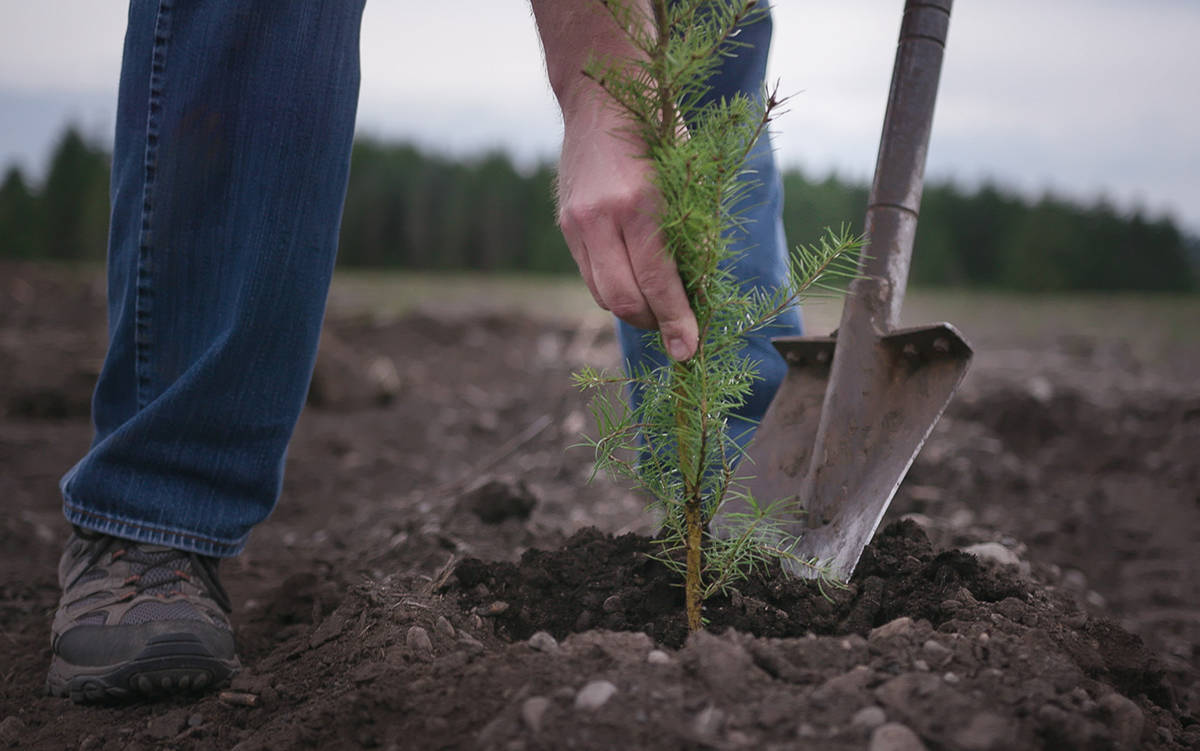As Washington emerges from a spring focused on COVID-19, one local group has spent the season in the state’s forests, planting hope for the future.
It’s a ritual that plays out each year for Washington’s working foresters – planting trees that down the road will supply the next generation’s home-building lumber and paper products.
In fact, this planned-and-planted program for renewal originated right here eight decades ago, when the Clemons tree farm, our nation’s first, was founded in Grays Harbor. Today, Grays Harbor County boasts 767,095 acres of working forest.
“In a never-ending cycle, working foresters grow, harvest and replant trees in order to start the new crop of trees growing to produce renewable wood and paper products for all of us,” says Cindy Mitchell, at the Washington Forest Protection Association.
Planning for the future
While more than half of Washington is covered in trees, only 37 percent of that is privately owned land. However, that same 37 percent also accounts for a full 67 percent of wood harvested in the state each year!
The result is a steady supply of wood for everything from home construction to products made from the residual fiber, like paper towels and face masks – work that supports more than 101,000 workers, generates about $5.5 billion in wages annually, and pays about $214 million in tax.
Here in Grays Harbor County, that equates to 4,709 direct and indirect jobs, and total wages of $259,071,236.
Chris McCabe, executive director of the Northwest Pulp & Paper Association, says pulp and paper mills in the Northwest rely on a steady supply of residual wood chips and sawdust delivered from sawmills in Washington, Oregon and Idaho to make the products people use every day. This includes a variety of essential products ranging from toilet paper and facial tissue to packaging and food storage containers.
“The COVID-19 outbreak underscores the importance of the forest products supply chain and why we must keep all aspects of our sector active and healthy,” he said.
RELATED READING: Why the construction industry is essential to local toilet paper stocks
But what happens after the harvest? For every tree harvested in Washington state, three are planted – 52 million new carbon-absorbing trees every year that help reduce our carbon footprint by 35 percent and keep water cool and clean so salmon can thrive.
It also helps reduce the risk of forest fires, a growing problem with our longer, drier summers and more people getting out to enjoy local forest.
Innovation moving forward
Back in 1941, that Grays Harbor tree farm took the innovative step of moving from simply cutting trees to seeing planting and growing as critical to long-term success.
Today’s working forests are just as innovative, using the best available science to improve and evolve forest practices to achieve goals for sustainability and environmental protection. Science guides decisions about managing these complex ecosystems, and new technology provides ways of improving both the process and the products made from renewable timber.
To learn more about the role Washington’s working forests play today, and tomorrow, visit workingforests.org


